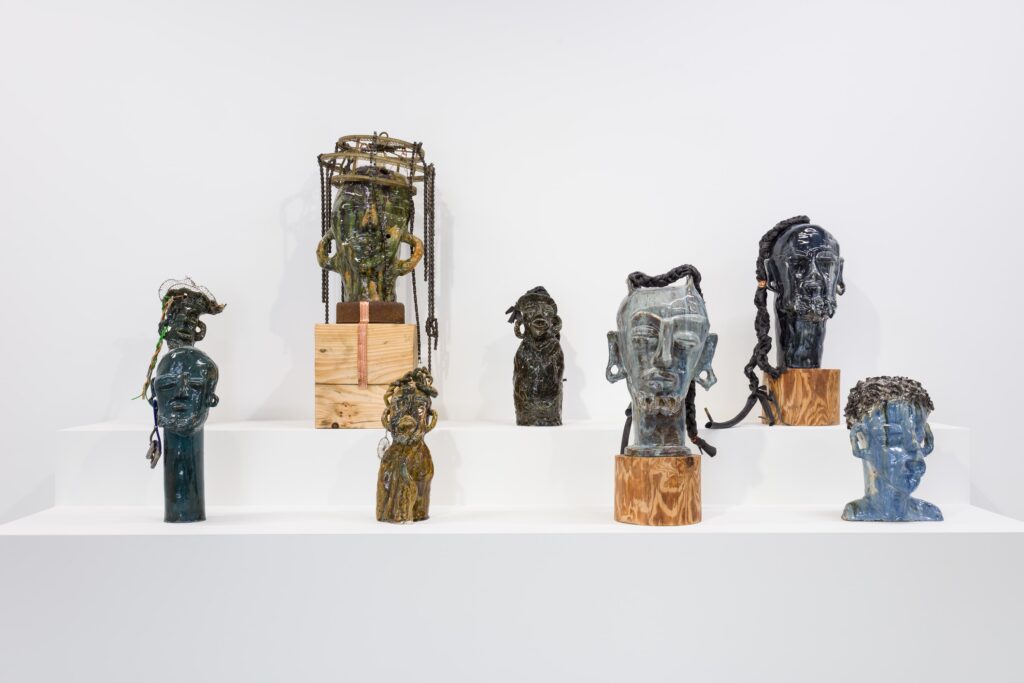Babirye Leilah and Cultural Agency.
To understand Leilah Babirye’s work you have to understand where she comes from, you have to understand the cultural landscape of Uganda, you have to understand the way her Buganda culture is set-up, the way artists worked in pre-colonial Uganda was in restrained circles, they created artefacts for particular purposes, for divination, for rites of passage, for ceremony and when all these artefacts were amalgamated, they made up the whole artistic/cultural outlook of the various nation states that existed, the artists did not exercise much autonomy in their production, the artists produced to perpetuate established narratives, for example clan totems or divination artefacts, the artist created within a mold.

The challenge that arose after the assimilation by Christianity, Islam and British culture was that people had a reflexive, knee jerk approach, artistic production was confined to the narratives that were annihilated by empire, the role of the artist was now no longer to innovate forward they had to lead back the populace to traditional values by displaying an unchanged authenticity there was a stop on cultural innovation because traditional power structures, chiefs, monarchs felt the absolute power they had slipping away from them and their recourse was to freeze history to distrust any sort of progress because they could not distinguish between what was colonial effect and what was organic cultural production.

The desire for cultural control intensified after Uganda’s independence, a junction occurred where on one part the possibility of modern monarchies with absolute cultural control existed and on the other part a decentralized cultural dispensation where the individual could contribute in nuanced ways to culture, since now under the republic the monarchs and chiefs did not have the power they had to move the populace in directions they deemed fit, the republic continued a simulacra of new Uganda unbounded by any traditional ties and at first this was refreshing, for the first time in their existence the people under extremely repressive systems of cultural controls had a chance at an expressive individual cultural output.

Now enter Leilah Babirye, her work is not purely in service to the idea of progress she is attempting to culturally innovate within her community, she is taking traditional motifs from Buganda and adding on them, she is using her agency as an artist to carve out a place for the queer in Buganda, she recognizes that exclusion in tradition occurs when artists yield their agency to the political or the “spiritual”. Babirye’s work seeks out a place for the queer at the very heart of the native, not through intervention or by proselytizing but by weaving neatly into the larger traditional/cultural loom as everyone else has, she succeeds as an artist because of this.
Her sculptures adopt an organic and primal form as from the totem carvings from the Buganda nation, but she refines these in her ceramic process, she endows the sculptures with a present profundity, they do not seek to stimulate traditionalist nostalgia, but they are not with ahistoricity. Babirye goes through time to mend the damage done by the priest-kings, missionaries, colonial administrators, the administrators of the new republic, with their resulting “ethics and integrity” born out of systems of erasure and exclusion for Babirye it is not enough to confront the modern end of these systems, she exercises her agency to go up to ancestry itself, her works creates a network through which the queer once separated from a “native – traditional “state can be able to connect to a wider physical and spiritual ancestry through the kuchu clan totems, before her this was impossible, the queer held no overt place in the traditional Buganda canon until she created one.
There is a bravery in Babirye’s work, in how her forms turn rigid tradition into an eternal craftsmanship through which she pushes native sculpture forward.
Images from gordonrobichaux.com
